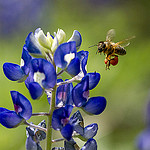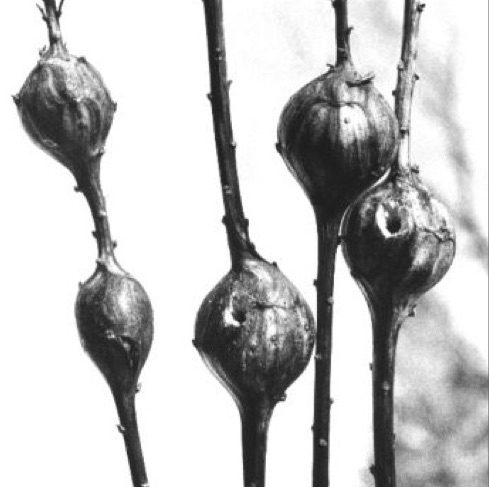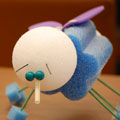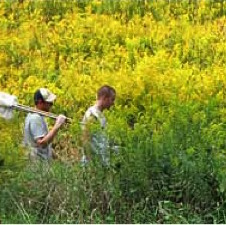Labs & Activities

Bouquet of Flowers
Ecology
Evolution
High School
Inquiry/Scientific Method
Insects
Plants
Recently Updated!
This series of four different lab activities all relate to flower reproduction. They have been designed to relate to each other and to stand alone. Name that Pollinator focuses on adaptations for successful pollination. Both pollen and pollen vectors are examined. Observing, data gathering, making measurements through the microscope, and… read more of the article entitled “Bouquet of Flowers”

Comparing Aquatic Communities
Animals
Ecology
Evolution
High School
Inquiry/Scientific Method
Insects
Microbiology
Physical Sciences
Plants
Teams of students measure physical and chemical characteristics of different sites in streams and/or ponds and collect benthic invertebrate organisms. They interpret patterns in the structure of the biological community at each site in light of the abiotic (physical and chemical) and biotic nature of the environment. Downloads Comparing Aquatic… read more of the article entitled “Comparing Aquatic Communities”

Goldenrod Galls
Ecology
Evolution
High School
Inquiry/Scientific Method
Insects
Middle School
Plants
This investigation examines natural selection and coevolution using goldenrod (Solidago canadensis), its stem gall insect (Eurosta solidaginis), and associated parasites, parasitoids, and predators that feed upon the stem gall insect (i.e., Eurytoma obtusiventris, Eurytoma gigantea, Mordellistena unicolor, and birds). Through measurements of gall size and an investigation of events occurring… read more of the article entitled “Goldenrod Galls”

Insect GENEration
Genetics
Insects
Middle School
Molecular Biology
Students build a model insect based upon genetic information provided to them in the lab directions. Gene forms (alleles) contributed by each parent are determined by tossing a coin with one side representing the dominant form of the gene and the other side representing the recessive form. Student teams record… read more of the article entitled “Insect GENEration”

Web of Gold Activity- Robert Raguso
2012 CIBT Alumni Workshop
Ecology
Elementary School
High School
Inquiry/Scientific Method
Insects
Middle School
Plants
“Web of Gold” uses common autumn wildflowers to explore the hidden lessons of food webs. Different insects visit flowers in search of different resources, in varying levels of abundance. Students will observe visitors to a flower (or area of flowers) and record their species and abundance. Older students can explore… read more of the article entitled “Web of Gold Activity- Robert Raguso”

Wolbachia
High School
Inquiry/Scientific Method
Insects
Microbiology
Molecular Biology
Lab 1 Goal: To introduce students to the incredible diversity and abundance of insects and to prepare specimens for DNA analysis. Upon completion of this activity, students will: Describe the diversity of insects collected in one location. Identify insects using taxonomic classification. Sort insects into “morphospecies” – similar looking species…. read more of the article entitled “Wolbachia”

World of Crickets
Ecology
Elementary School
High School
Inquiry/Scientific Method
Insects
Middle School
Recently Updated!
“The World of Crickets” is a series of lab activities involving live crickets kept in the classroom that can be modified to suit students of all ages. Lab 4 is best suited for older students, as it requires experimental design and execution. Lab 1: What Do Crickets Eat? Students will… read more of the article entitled “World of Crickets”

